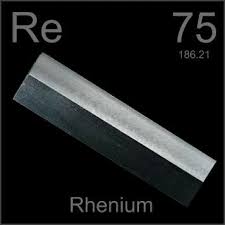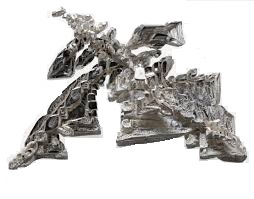General Properties of Silver
Sep 30,2019
Silver [7440-22-4], chemical symbol Ag, atomic number 47, and relative atomic mass (i.e., atomic weight) 107.8682(2), is the second metal of group IB(11) of Mendeleev’s periodic chart. Silver is named after the Anglo–Saxon Seolfor, sulfur, while its chemical symbol, Ag, is derived first from the Greek, argyros, and later from the Latin, argentum, silver.
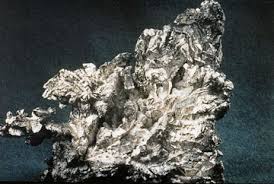
Physical properties
Pure silver is a moderately dense metal (10,501 kg.m–3) that has a brilliant white metallic luster. Silver crystals have a face-centered cubic (fcc) space lattice structure with a melting point of 961.78°C.
From a mechanical point of view, silver is slightly harder than gold (e.g., its Mohs hardness is roughly 2.5 to 3.0) and is very ductile and malleable, being exceeded only by gold and perhaps palladium. Pure silver has the lowest electrical resistivity (1.47 μΩ.cm) and the highest thermal conductivity (450 W.m–1.K–1) of all the pure metals and possesses the lowest contact resistance.
Chemical properties
From a chemical point of view, silver is stable in pure air and water in comparison with copper, but it readily tarnishes when exposed to ozone, O3, hydrogen sulfide, H2S, or air containing sulfur dioxide, SO2. Strong halogenated mineral acids (e.g., HCl, HBr, and HI), nitric acid, HNO3, and sulfuric acid, H2SO4, readily dissolve silver, but it is not corroded by hydrofluoric, HF, orthophosphoric, H3PO4, or other common sulfur-free organic acids (e.g., formic and acetic acids).
Moreover, it is highly resistant to molten alkali-metal hydroxides (e.g., NaOH and KOH) and is extensively used for making labware for alkali fusion. However, silver forms a eutectic with molten metals such as low-melting-point metals: mercury, lead, tin, and bismuth and alkali metals such as sodium and potassium. Like copper, silver can form explosive acetylenides (i.e., AgCH≡CHAg) when put directly in contact with compressed acetylene gas.
Silver compounds can be absorbed into the circulatory system and reduced silver deposited in the various tissues of the body. A condition known as argyria results in a grayish pigmentation of the skin and mucous membranes. Silver-soluble compounds have germicidal effects and kill many lower organisms effectively without harm to higher animals.
- Related articles
- Related Qustion
- 10 Interesting Facts About Silver Mar 5, 2024
Silver (Ag), atomic number 47, is a rare metal resource with dull-white color. In nature, most of the silver resources are associated with Lead-Zinc ores, except for a small portion in the form of simple substance or silver minerals.
- What is the charge of silver? Feb 18, 2024
Silver typically has a +1 charge when involved in an ionic bond. Although silver can form both +1 and +2 cations, the +2 is so rare that we usually name Ag + as silver ion, not silver(I) ion.
- Flame test and chemical principles of silver Jan 25, 2024
Silver do not produce a characteristic flame test color. There are several possible explanations for this.
Rhenium metal is used as an additive to tungsten and molybdenum-based alloys to impart useful properties at elevated temperatures. The outstanding properties of rhenium and rhenium alloys suggest their use in many specialized applications.....
Sep 30,2019Inorganic chemistrySilver is one of the oldest metals, known since ancient times. It is a precious metal worldwide, used in ornaments, coins, and utensils.....
Sep 30,2019Inorganic chemistrySilver
7440-22-4You may like
- Silver
-
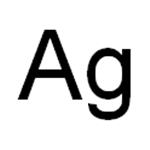
- 2025-12-15
- CAS:7440-22-4
- Min. Order:
- Purity: 0.99
- Supply Ability:
- Nanometer silver solution
-

- $410.00 / 1KG
- 2025-12-03
- CAS:7440-22-4
- Min. Order: 1KG
- Purity: 98%
- Supply Ability: 1-20mt
- Silver
-
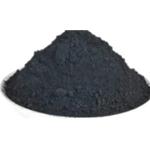
- $685.00 / 1ton
- 2025-09-26
- CAS:7440-22-4
- Min. Order: 1ton
- Purity: 99%
- Supply Ability: 900ton




